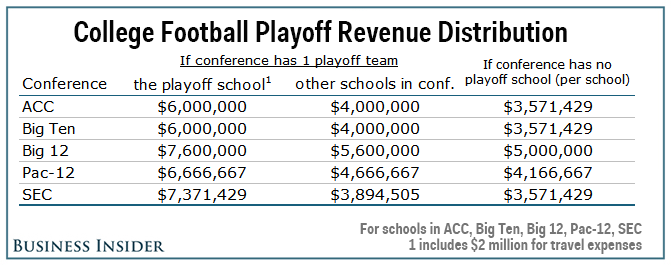The college football playoff started with a bang, smashing previous TV ratings records. The National Championship Broadcast averaged a record setting 33.4 million viewers even though our Ohio State Buckeyes ended up cruising to a comfortable 22-point victory. The added game and the boosted TV ratings have resulted in added riches for everyone: the universities, the networks, the conferences, and the coaches. That is, everyone except for the players.
The first year of the playoff has primarily provided a huge boost to the revenue of schools and network television. By virtue of making the championship game, Oregon and Ohio State will pocket an amazing $40 million each. To put that statistic in perspective, the entire net worth of Oregon’s football program is $31 million, and Ohio State’s is roughly $67 million. Coaches Mark Helfrich of Oregon and Urban Meyer of Ohio States have large bonuses in their contracts for making the National Championship.
Even the conferences are making extra money from this new system, as a result from increased television ratings.
Besides the players, it seems like everyone involved in this new playoff system is pocketing from the spectacle. Because of antiquated NCAA rules, players cannot be paid and can be severely punished for accepting money. So some of our favorite players like Ezekiel Elliot or Cardale Jones didn’t make a penny from their championship run.
Many people have lamented the fact that top executives are making a fortune off the backs of these “student-athletes” (who, in fact, had to miss class to play in these bowl games). And with an increased revenue. this only becomes more apparent.
To make matters worse, there is a push to expand the playoffs to eight teams, adding even more games to the hefty schedules of these athletes. This means even more money could be made with an extra round.
It’s apparent that a change like this would not benefit these players at all. But then again, they don’t have a say.
Written by Tristan Rhee’ 17








